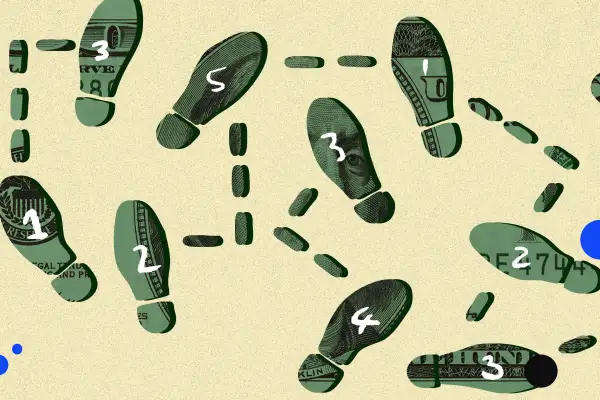The 3 Best Money Moves for June

Warmer summer days mean the clock is ticking to prepare your wallet for extreme weather.
In the June edition of best money moves, we're focusing on some persistent money stressors, including how to prepare for the possibility of costly hurricane damage and ways to save while staying cool this summer. Plus, we'll also give tips about where to look for food deals when it feels like prices won't ever come back to normal. Let's dig in.
1. Check your insurance coverage ahead of hurricane season
The start of June marks the beginning of the Atlantic hurricane season. Financially preparing for hurricanes is a smart move every year, but it’s especially pertinent right now. Weather forecasters at the National Oceanic and Atmospheric Administration predict that this year’s season could be one of the most active ever, with up to 25 named storms.
Start by reviewing your home and flood insurance policies so you understand what disasters are covered. Standard homeowners insurance typically covers a range of natural disasters. But there are crucial exceptions, like flood damage, and most coastal states have a separate windstorm or hurricane deductible that comes into effect during storm season.
If you’re a renter, you’ll need your own insurance to cover damage to furniture or other possessions. Your landlord’s coverage will only apply to the structure of the building. These tips only scratch the surface of how you can prepare. For a more in-depth checklist, read the Insurance Information Institute's hurricane season insurance guide.
Note that changes to existing insurance policies typically only take a few days to go into effect. But you can’t wait until there’s a storm barreling your way, as most insurers don’t allow changes after a storm watch or warning has been issued in your area.
Finally, we can’t talk about insurance coverage without noting that homeowners in many states, including hurricane-prone places like Florida and Louisiana, have seen insurance premiums skyrocket recently. If you’re struggling to afford your policy, the best thing to do is be proactive. Get in touch with your insurer to ask about ways to reduce costs, and shop around to see if other companies may offer you more discounts. For more advice, see Money’s story on how to find affordable home insurance.
2. Prep for a hot (and expensive) summer
The official start of summer may be weeks away, but some parts of the U.S. are already facing sweltering heat. In fact, this summer is ramping up to be one of the warmest on record. It's little surprise, then, that experts predict the cost to stay cool is about to soar. The average cost of home cooling this summer will be $719, up nearly 8% over last year, according to projections from the National Energy Assistance Directors Association (NEADA) and the Center for Energy, Poverty, and Climate (CEPC).
Most of the ways to keep energy costs down during the summer are fairly low tech. Start by covering your windows to keep the sun out, setting your thermostat higher when you’re not home, sealing windows to keep hot air out and turning off fans when you’re not in the room.
A little bit of maintenance can also go a long way, too. Simply replacing a dirty air filter with a clean one can improve your air conditioner’s efficiency by up to 15%, according to the Energy Department.
3. Shop smart for groceries
Here’s some good news for Americans exasperated by doggedly high consumer prices: Grocery prices, on average, actually fell in April, according to the Bureau of Labor Statistics.
The bad news, of course, is that singular month’s decrease was fairly small and comes after a few years of rising prices, so your bill at the cash register probably still feels maddeningly high.
We know you’ve likely already employed tried-and-true savings strategies like using coupons, planning your meals around sale items and buying generic products. But this summer, you should add in another step: Look for stores offering discounts on items you buy regularly. Big brands, including Amazon, Target and Walmart, have all recently announced plans to slash prices on hundreds of essentials. (Money has a full list of stores with discounts this summer here.)
When you’re making your shopping list, keep in mind that grocery prices aren’t down across the board. The latest BLS numbers show that a variety of items have decreased in price between April 2023 and April 2024, ranging from apples (down 12%) to coffee (down 2%) to eggs (down 9%).
Yet meat, and beef in particular, is still up. Summer cookout favorites like hotdogs and ground beef increased 7% and 6%, respectively, since April last year. And pantry staples like crackers, cereals and flour are all priced higher today than last year.
One surefire way to cut back on your food spending? Eat at home. Menu prices at sit-down restaurants and fast-food restaurants are still climbing.
More from Money:
All the Big Grocery Stores and Fast Food Chains With Special Deals This Summer


